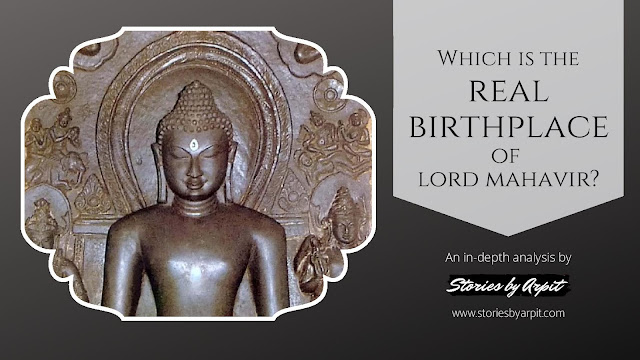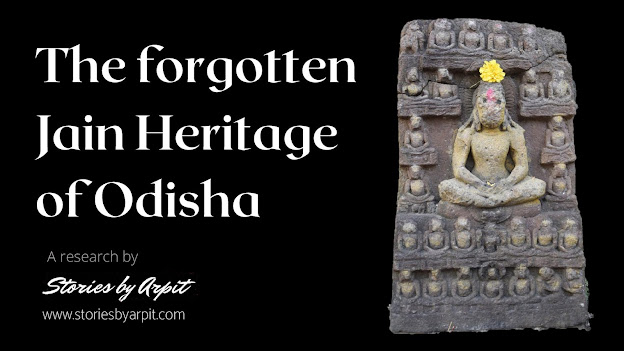The unique Jain temple of Himmatnagar
Throughout the history of
mankind, humans have created a sacred space, not just to witness
the glory of the lord but also as a connecting link with the divine. Humans
have put aside constraints of money, effort and time to construct beautiful
temples which have been built on the foundations of faith, divinity and
spiritualism. A temple is not just a sacred structure but a space where an
individual could imbibe the enshrined energies. Every aspect of the temple,
from its architecture to its deities has been consciously designed
to make this experience happen.
 |
| The unique Jain temple of Himmatnagar |
Similarly, Jain temples across
the world have been constructed based on detailed scientific principles as laid
out in traditional scriptures embedded with genuine craftsmanship. Jain temples
have usually followed the scriptures known as “Shilp Shastra’s” (namely Prasadmandan,
Rupmandan, Aparajita, Kshirarnava, Sutrasantan, Diparnava, Vraksharnava,
Vastukautuka, Vastumandala, Vastumanjari and Vastusara) based on which they
are constructed. While famous Jain temples like Delwara (Mt. Abu), Ranakpur, Tarangaji, Shatrunjay (Palitana)
have been constructed in the past by legendary sculptors, there are hundreds of
Derasars across the country which are unique in their own might.
 |
| Mulnayak Shri Mahavir Swami |
One such temple is situated in
Himmatnagar town of Gujarat which is so unique that it stands out from all
other Derasars. The temple, situated in the Vakhariavas – Dr. Gandhi Road, is
dedicated to the 24th Tirthankar, Lord Mahavir. Although no records
of the temple construction/ installation can be found, many idols date back to the
13th Century and the temple structure seems to be a cluster of 2
Jain temples that were grouped together (maybe post attacks by Allaudin Khilji). Following are the 11 unique
features/attributes of the Himmatnagar Jain temple which would be rarely found
elsewhere –
1. The idol of the Mulnayak Bhagwan faces the West direction instead of East
As per the principles of Shilp
Shastra, the idol of the Mulnayak should face the eastern direction. However,
Lord Mahavir’s idol faces the west direction. Another unusual aspect of the temple is that
while the Shikhar (spire) of Mulnayak prabhu is devoid of any carvings, the Shikhar
of a subsidiary shrine dedicated to Shri Sumtinath Bhagwan has intricate
carvings on it. Further, as per the principles of Shilp Shastra, the Dhwajj
Dand, i.e. the flag post of the main deity of the temple, i.e. the Mulnayak
should be taller than its subsidiary shrines. However, in this temple, the Dhwajj
dand of the subsidiary shrine dedicated to Lord Sumtinath is taller than that
of Mulnayak Prabhu’s spire!
How could this happen? While
there are no definitive answers to the question, there are two assumptions–
a. It is believed that the
ancient Mulnayak of the temple was Lord Sumtinath and later, on the advice of
a revered Acharya, Shri Mahavir Swami’s idol was made the mulnayak.
b. Another theory states that as many
shrines/ deities and temples were probably grouped together to form this single
temple (post attacks by Allaudin Khilji) the Shikhar of Lord Sumtinath Bhagwan
was left untouched.
 |
| The intricately carved spire of Shri Sumtinath Bhagwan |
2. Idols of Lord Adinath, Bahubali
& Jain monks
 |
| Shri Adinath Bhagwan (Left); Bahubali (Centre); Panchmushti Loch (Right) |
The outer wall of a temple is known
as the “Jagati” which is decorated with the carvings of deities of demi gods
& celestial beings like Yaksha & Yakshini. However, apart from the
idols of the celestial beings, the Jagati showcases of Lord Adinath with flowy
hairs immersed in deep meditation, a tirthankar conducting Panchmushti Loch (customary pulling
of hairs before Diksha); an idol of Bahubali immersed in
meditation with creepers entangled in his legs and variohs idols of Jain monks engaged in meditation with ‘Ogho’ & 'mala' in their hands. These sculptures can rarely be
found on the outside wall of a Jain temple as it is visible to the outside
world and hence susceptible to Ashatana.
 |
| Idols of Monks holding rosary and Ogho in hand |
3. Idols of Krishna, Ganesh
& Hanuman
The outer walls also depict idols
of Shri Krishna, Ganesh and Hanuman. Why were these idols placed? Again though
there is not a definitive answer to that, it is perceived that the carvings of
the Jagati try to tell a story which has not yet been comprehended. Although
Krishna & Hanuman feature is the Jain Ramayan and Mahabharat, no links have
been found to this temple. As per Jainism, Krishna in his next birth will become a future Tirthankar named Amamswami. The Jagati also depticts an idol of a King offering
his respects to Sarasvati Devi , a snake charmer, an archer, a warrior etc.
 |
| Top Left - A king offering respects to Sarasvati Devi; Bottom Left - Ganesha; Centre - Krishna; Right - Hanuman |
4. No Mangal Murti’s in the
temple
Jain temples have a unique
feature not found elsewhere in the other temples – the outer wall of the temple
contains 3 Mangal-murti’s (non-consecrated idols), i.e. idols of the Tirthankar
on the three sides representing a Samavasaran where the Lord faces all four
directions. In this temple, the Mangal Murti’s are not present; instead 3 idols
of Kshetrapal Dev (celestial protecting the land) have been installed.
 |
| Idols of Kshetrapals |
5. Erotic Sculptures
While temples of Khajurao and
Konark are famous for its erotic carvings, Jain temples usually do not
feature such sculptures on its outer walls (Ranakpur & Osian Jain temple’s walls feature
some erotic carvings). The Jagati of this temple has 2 carvings explicitly
depicting erotic sequences. Why would erotic carvings feature on a Jain temple?
The answer to that probably lies in the Shilp Shastra which gives the following
reasons –
a. The outer wall represents the
outer world- the world of illusion, while the inner sanctum represents to the
liberated stage - 'moksh', where
the soul is free from all bondage's. The Shilp Shastras advocate that through
these erotic sculptures, a lay person needs to understand that while sexual
activities may give temporary pleasure, but it is the actual renunciation which
can give eternal pleasure.
b. The erotic sculptures are
represented through Yaksha's and yakshini's. Shilp Shastra states
that although these demi-gods can engage in these pleasurable activities, they
can never be liberated. Therefore they are represented in the circumambulation
path, i.e. where the laymen take pradakshina representing the fact that these
yaksha's go on and on around the (vicious) circle (represented through
pradakshina), but they can never attain true bliss which a liberated soul
possesses which is situated inside the sanctum.
While these reasons remain debatable,
the true motive of the sculpture has been lost with him.
 |
| Erotic sculptures |
While there are many idols depicting
Padmavati Devi with Lord Parshwanath during “Kamath Upsarg”, this temple houses
one unique Panchdhatu idol of Lord Parshwanath above a standing idol of
Padmavati devi whose design can rarely be seen elsewhere.
 |
| Unique idol of Lord Parshwanath with Padmavati Devi |
7. Eating Monkeys
The ‘Jagati’ of the temple is
lined with sculptures of various animals that resemble monkeys. Interestingly,
all of the monkeys seem to be eating something (a fruit perhaps). Now the
question arises what message did the sculptor want to convey through these many
eating monkeys? That secret seems to have gone with the sculptor himself.
 |
| The curious case of eating monkeys ! |
Idols of Sarasvati Devi are usually
depicted with a granth (scriptures), a mala (rosary), a water pot
and a Vina (musical instrument). The ancient idol of Sarasvati Devi
installed in this temple is not depicted with a Vina and a scripture which is
very rare and unique.
 |
| Shri Sarasvati Devi |
When the lost city of Abhapuri
was accidentally discovered by Acharya Shri Dharmasurishwarji Maharaja and Seth
Fatehchand Motichand Vakharia in the year 1955, they found various ruins of
Jain temples and idols in the forested area which is now known as Polo Forests.
The revered Acharya Shri advised the Seth to carry five idols
from those temples back with them (which were less damaged) as he feared that if left in the forest,
these idols would either fall into wrong hands of robbers or the Archaeological
survey would take them into their custody (Read the full story here). These
idols were ceremoniously installed in this temple and till date people throng
to this temple to have a glimpse of the divine ancient idols.
 |
| The ancient mulnayak of Abhapuri - Shri Adinath Bhagwan |
10. Un-stealable idol made of Sphatik
The temple houses a beautiful
idol of Lord Adinath (which was brought from a Gruh Jinalay in the vicinity) carved out of a precious stone named
Sphatik (Quartz Crystal). Due to its precious value, this idol was stolen
thrice, only to be returned everytime by the thieves who stole it.
 |
| Shri Adinath Bhagwan in Sphatik |
The archways of two of the
smaller shrines on the roof of the temple depict a Shravak (Jain Layman) and a
Shravika (Jain Laywoman) engaged in Samayik (vow of periodic concentration) in front of Sthapanacharya.
Such images can rarely be seen elsewhere in a Jain temple.
 |
| Unique idols of Shravak & Shravika doing Samayik (top) |
While all these attributes make
the temple very unique, its serene environment and a spiritual atmosphere also make this temple stand out. This temple is currently under renovation under the
guidance of Shri Kumarpalbhai V Shah and it will soon be restored back to its
original glory.
 |
| Ancient idol of Manibhadra Veer |
I would like to thank Shri
Mihirbhai Vakharia for taking me to this temple and providing valuable
insights for this blog post!










Please send me the contact no of temple
ReplyDeleteSorry, I do not have the contact number. It is in Dr. Gandhi Road, Vakhariavas, Himmatnagar.
Deletephone no.9374711089 vipul vakharia
Deleteખુબ ખુબ અનૂમોદના. દેરાસર ની નાનામાં નાની માહિતી મુકવા બદલ ધન્યવાદ. ખૂબ સરસ પ્રયત્ન છે.
ReplyDeleteખૂબ જ સરસ ચિવટપૂવૅક આપે દયાન આપી આ લેખાણ કરેલ છે ખૂબ અનુમોદના
ReplyDeleteBeautiful અદભૂત...અદભૂત
ReplyDeleteદર્શન કરવા જેવું જ્યાં આજ ની તારીખ માં કોતરણી અને જૈનો માટે ખાસ સમજવા જેવું ઇતિહાસ પણ છે
દરેક કાર્યકર્તા ને અભિનંદન
Milan S shah
Beautiful temple and your writing! would be helpful to Yatris if you mention bhojanshala facilities, if any.
ReplyDeleteThis comment has been removed by a blog administrator.
ReplyDelete